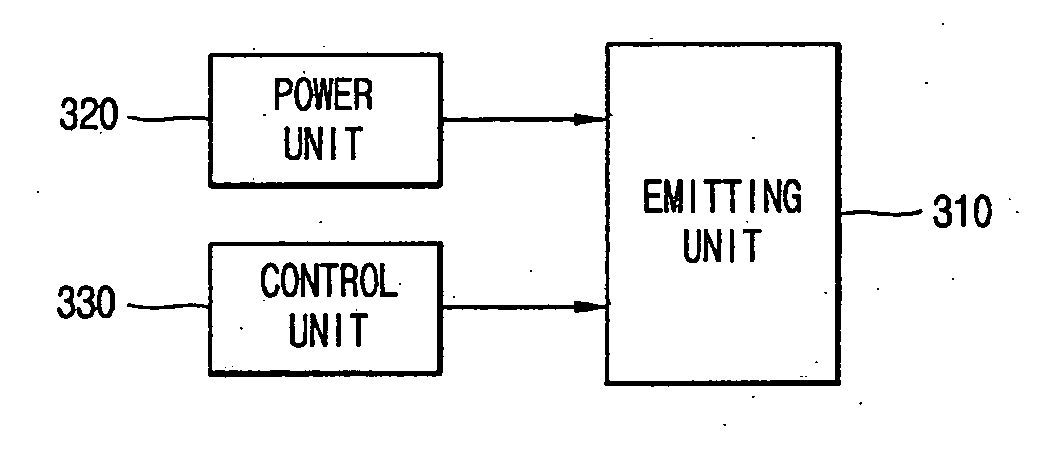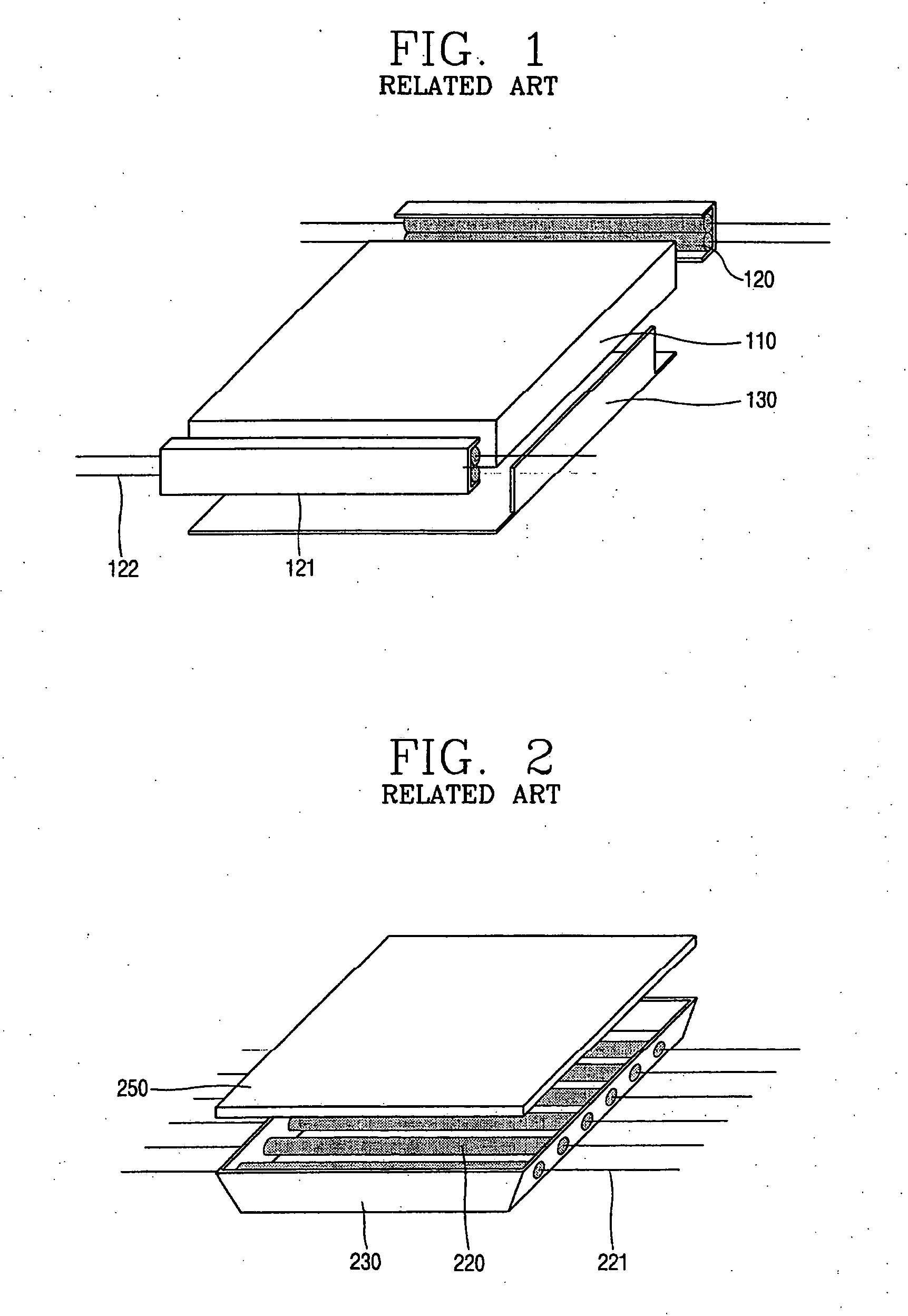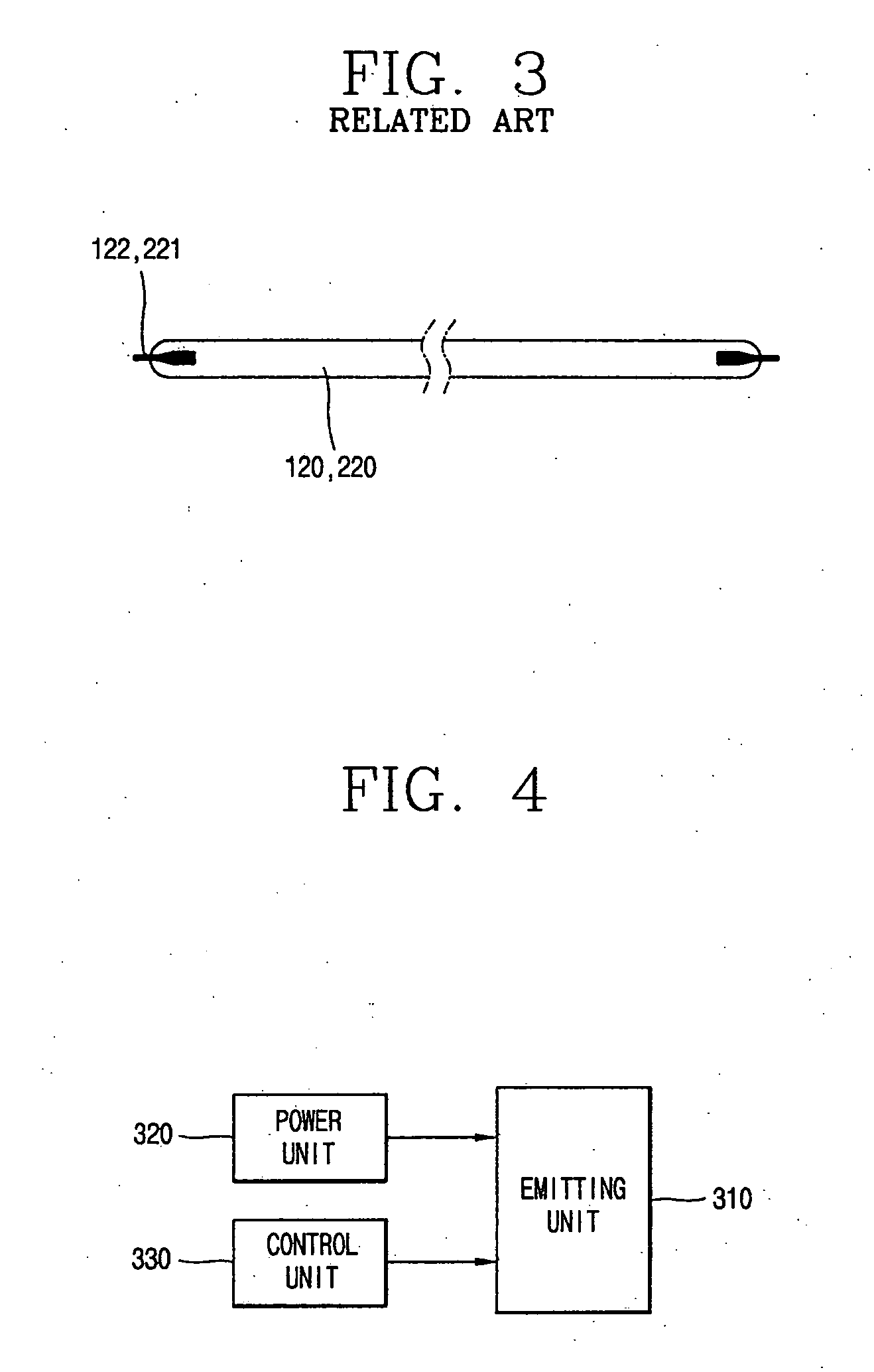Back-light apparatus for liquid crystal display device
- Summary
- Abstract
- Description
- Claims
- Application Information
AI Technical Summary
Benefits of technology
Problems solved by technology
Method used
Image
Examples
first embodiment
[0052]FIG. 6 is an exemplary view showing light emitting diodes connected in series according to turn-ON and turn-OFF of the first to third selection switches.
[0053] In FIG. 6, the first and second selection switches (SW11˜SW1n and SW21˜SW2n) are turned OFF so that the first electrodes and the second electrodes of the light emitting diodes (LED1˜LEDn+1) are not commonly connected to the first common line 410 and the second common line 420. But, the third selection switches (SW31˜SW3n) are turned ON so that preceding second electrodes of the light emitting diodes (LED1˜LEDn+1) and succeeding first electrodes are connected to the third lines 430. Thus, the light emitting diodes (LED1˜LEDn+1) are connected in series.
[0054] The light emitting diodes that are connected in series may be driven by applying power 321 between a first electrode of a first light emitting diode (LED1) and a second electrode of a last light emitting diode (LEDn+1).
second embodiment
[0055]FIG. 7 is an exemplary view showing light emitting diodes (LED1˜LEDn+1) connected in parallel according to turn-ON and turn-OFF of the first to third selection switches (SW11˜SW1n, SW21˜SW2n, SW31˜SW3n) shown in FIG. 5.
[0056] In FIG. 7, the first selection switches (SW11˜SW1n) are turned OFF so that the first electrodes of the light emitting diodes (LED1˜LEDn+1) are not commonly connected to the first common line 410, the second switches (SW21˜SW2n) are turned ON so that the second electrodes of the light emitting diodes (LED1˜LEDn+1) are commonly connected to the second common line 420, and the third switches (SW31˜SW3n) are turned OFF so that preceding second electrodes of the light emitting diodes (LED1˜LEDn+1) and succeeding first electrodes are not connected to the third lines 430. Accordingly, because the second electrodes of the light emitting diodes (LED1˜LEDn+1) are commonly connected to the second common line 420, the light emitting diodes (LED1˜LEDn+1) are connected...
third embodiment
[0059]FIG. 8 is an exemplary view showing light emitting diodes (LED1˜LEDn+1) connected in parallel according to turn-ON and turn-OFF of the first to third selection switches (SW11˜SW1n, SW21˜SW2n, SW31˜SW3n).
[0060] In FIG. 8, the first selection switches (SW11˜SW1n) are turned ON so that the first electrodes of the light emitting diodes (LED1˜LEDn+1) are commonly connected to the first common line 410, the second selection switches (SW21˜SW2n) are turned OFF so that the second electrodes of the light emitting diodes (LED1˜LEDn+1) are not commonly connected to the second common line 420, and the third selection switches (SW31˜SW3n) are turned OFF so that preceding second electrodes of the light emitting diodes (LED1˜LEDn+1) and succeeding first electrodes are not connected to the third lines 430. Accordingly, because the first electrodes of the light emitting diodes (LED1˜LEDn+1) are commonly connected to the first common line 420, the light emitting diodes (LED1˜LEDn+1) are connect...
PUM
 Login to View More
Login to View More Abstract
Description
Claims
Application Information
 Login to View More
Login to View More - R&D
- Intellectual Property
- Life Sciences
- Materials
- Tech Scout
- Unparalleled Data Quality
- Higher Quality Content
- 60% Fewer Hallucinations
Browse by: Latest US Patents, China's latest patents, Technical Efficacy Thesaurus, Application Domain, Technology Topic, Popular Technical Reports.
© 2025 PatSnap. All rights reserved.Legal|Privacy policy|Modern Slavery Act Transparency Statement|Sitemap|About US| Contact US: help@patsnap.com



